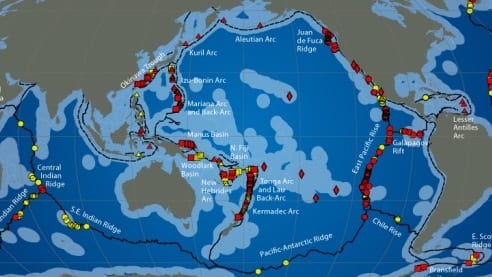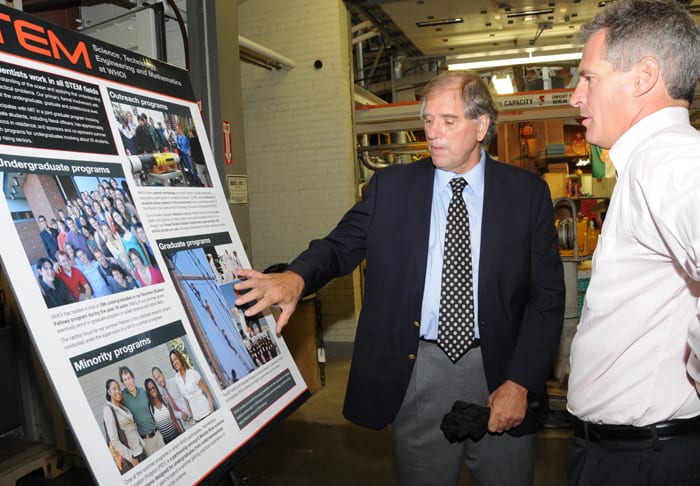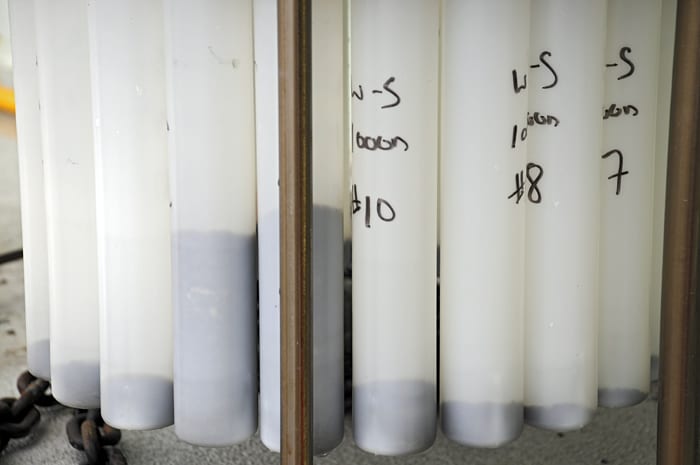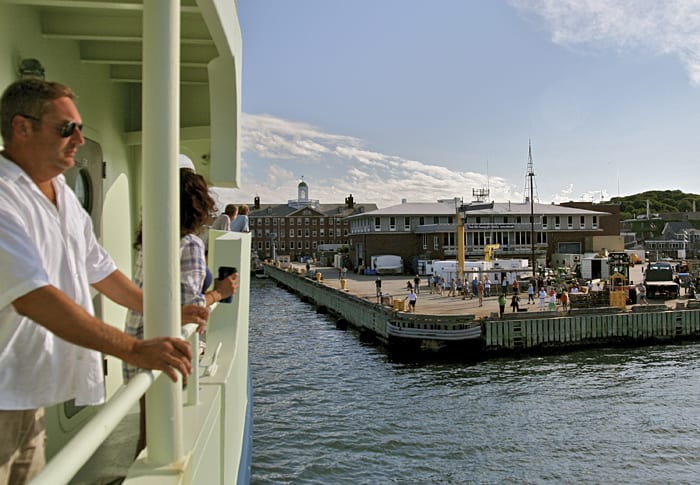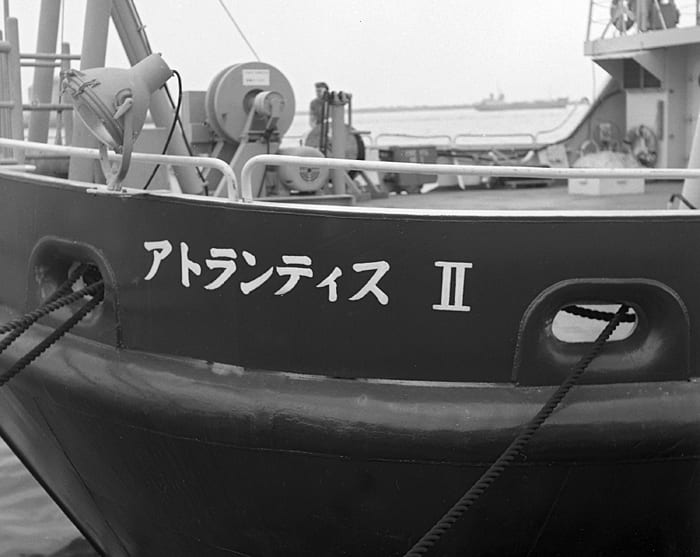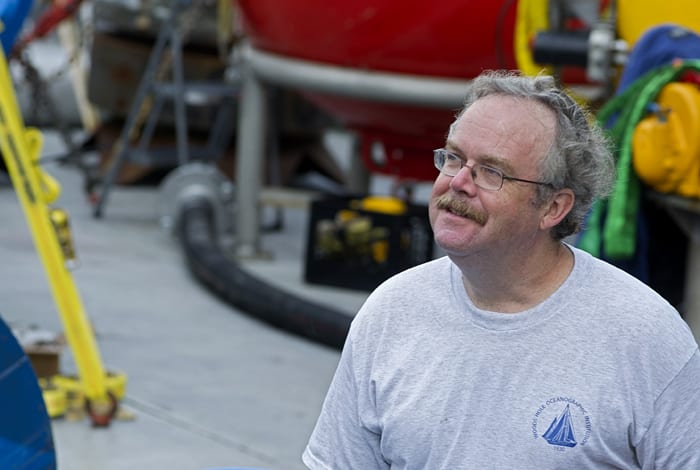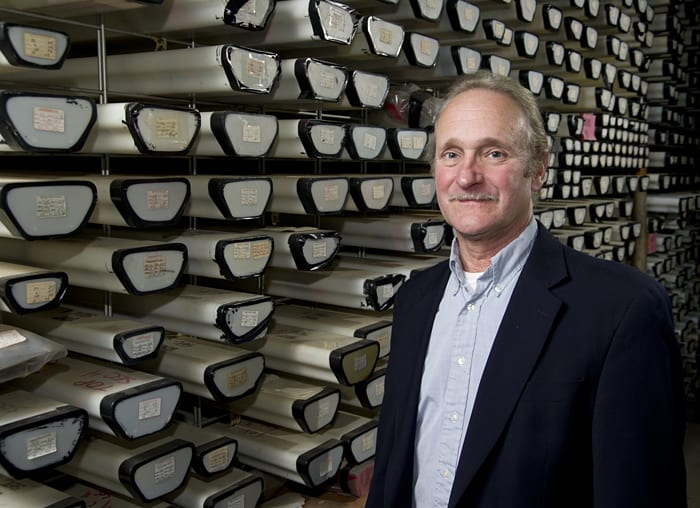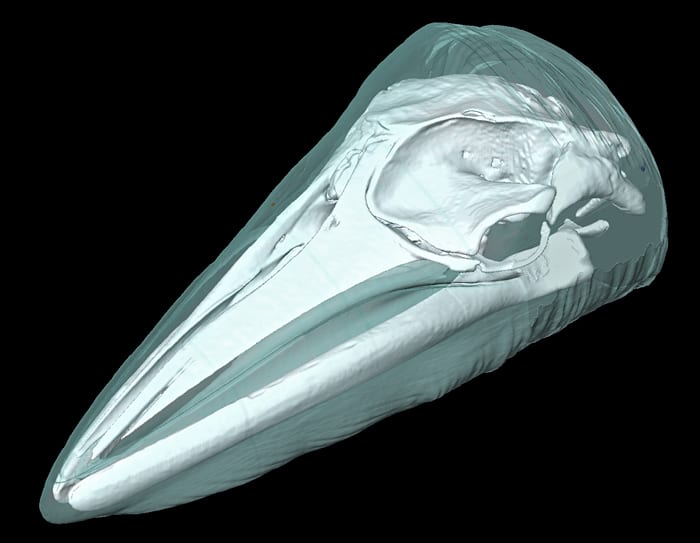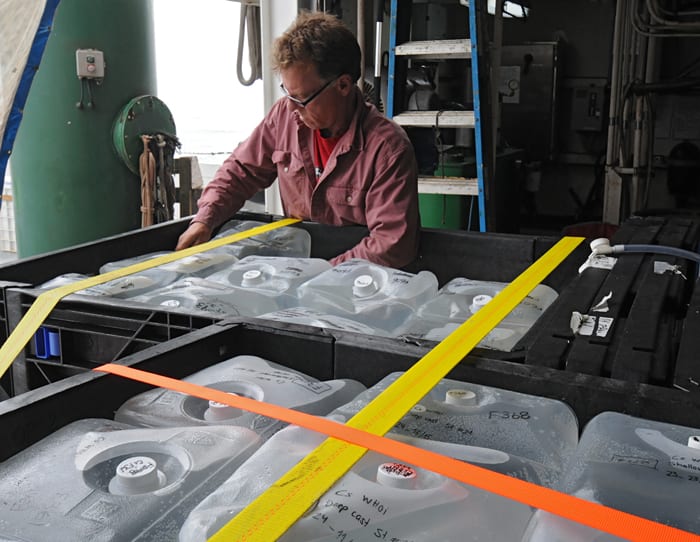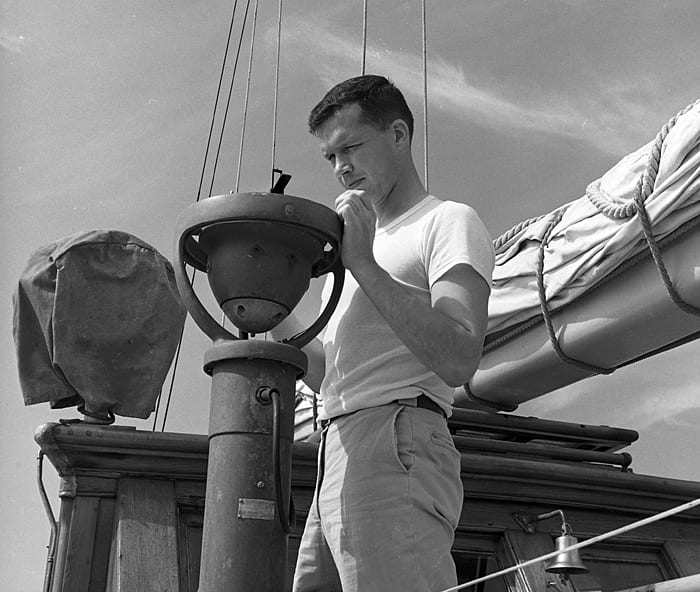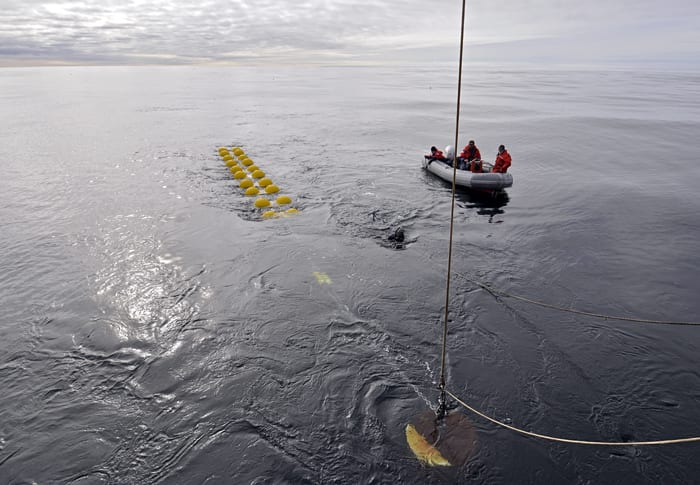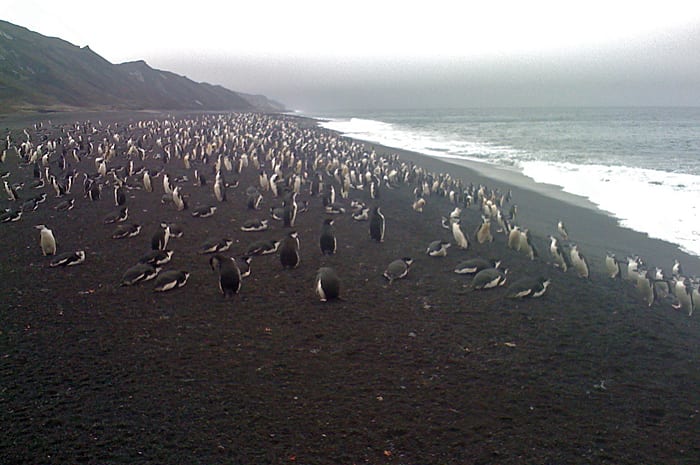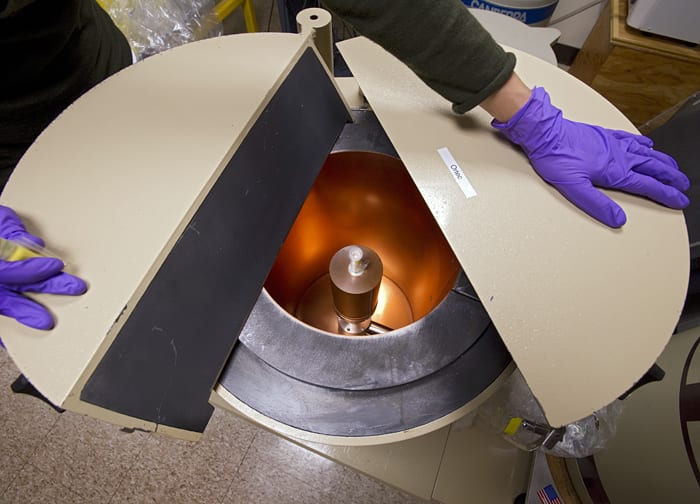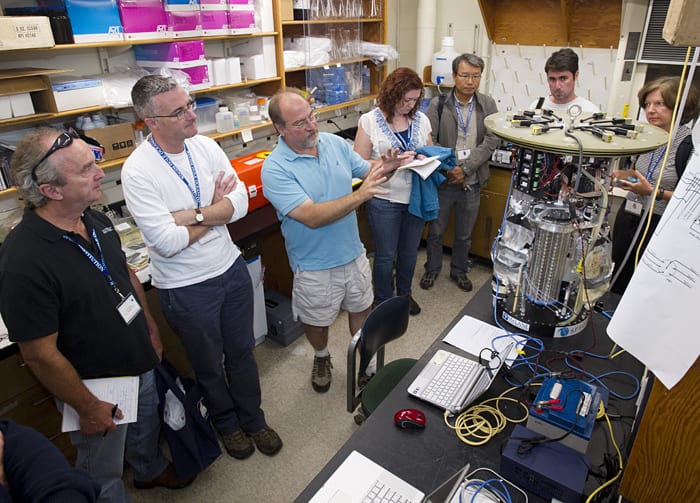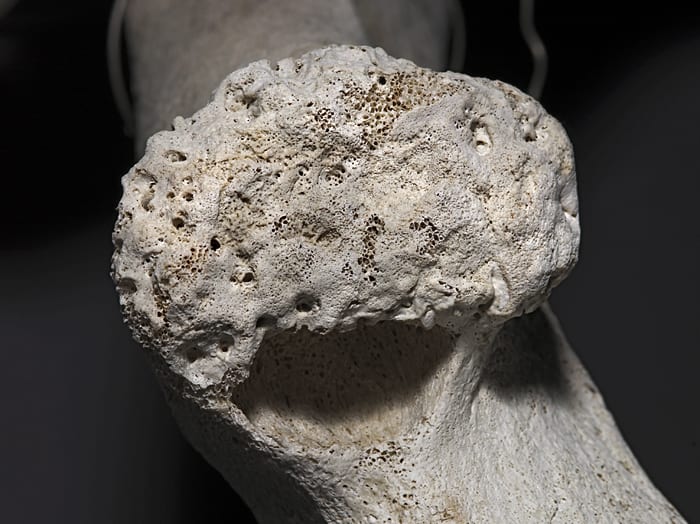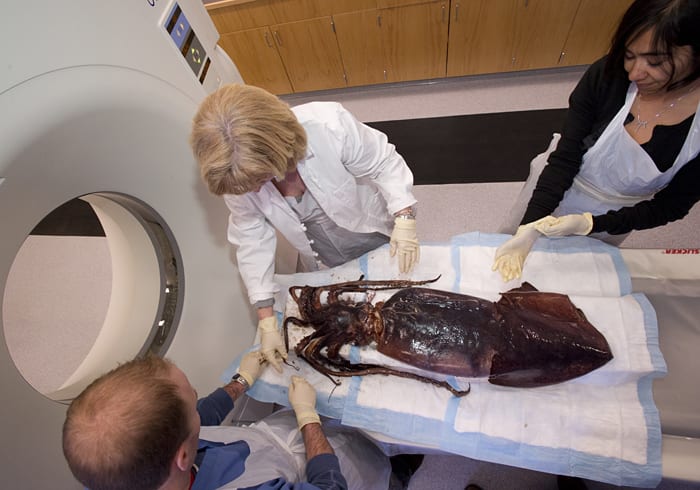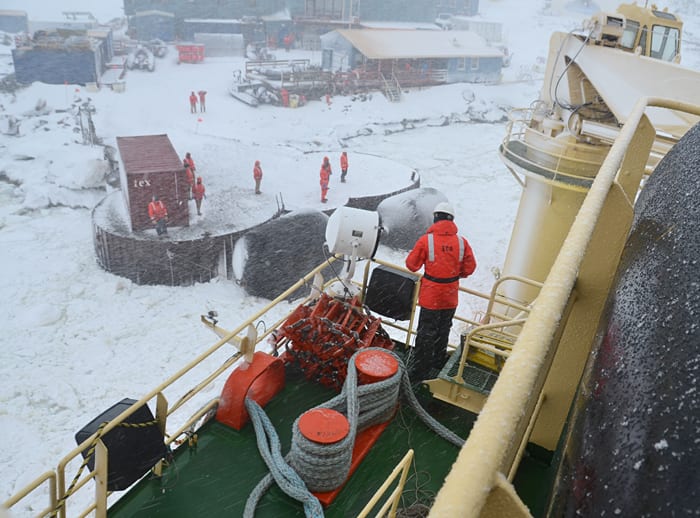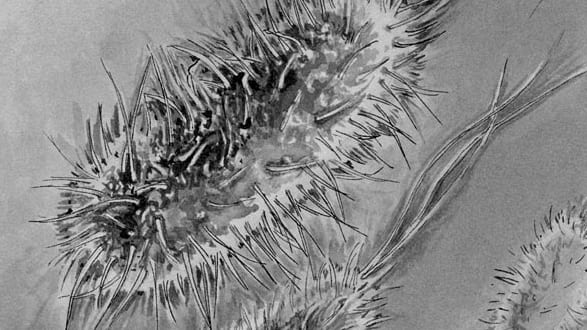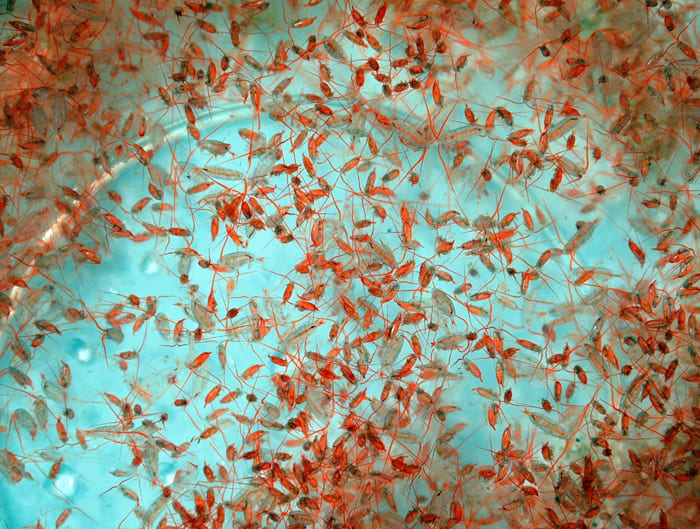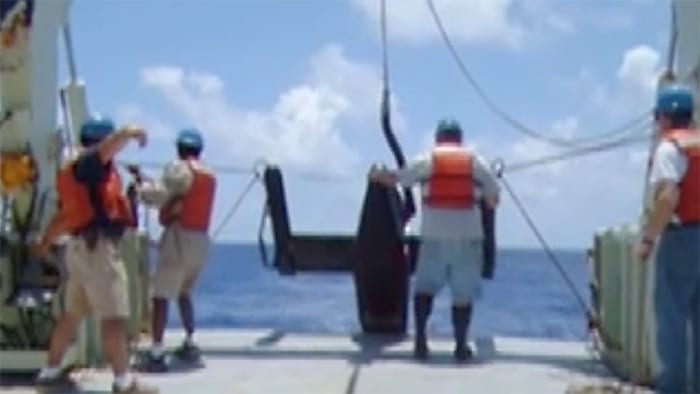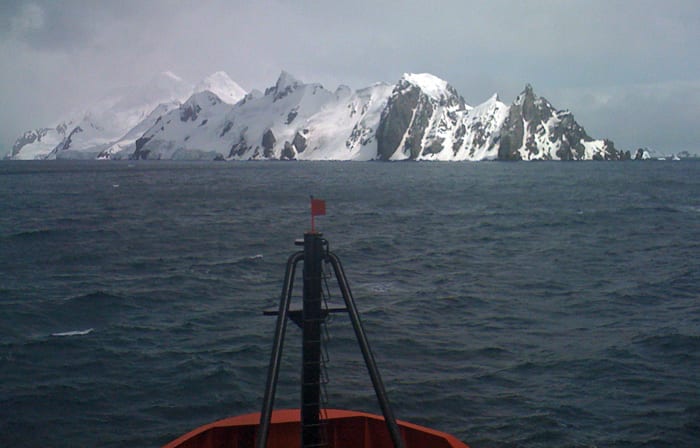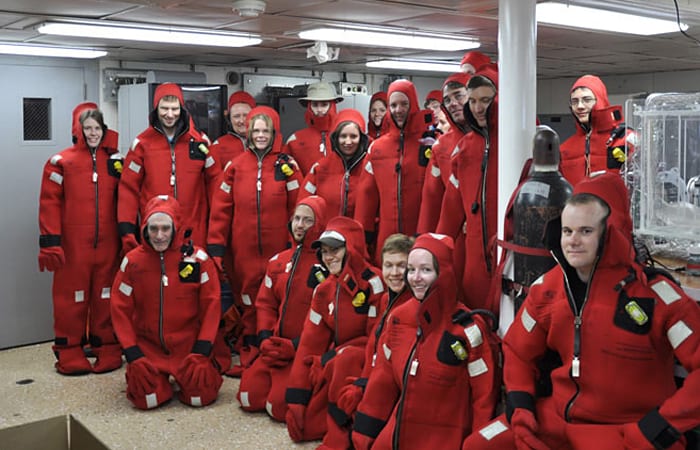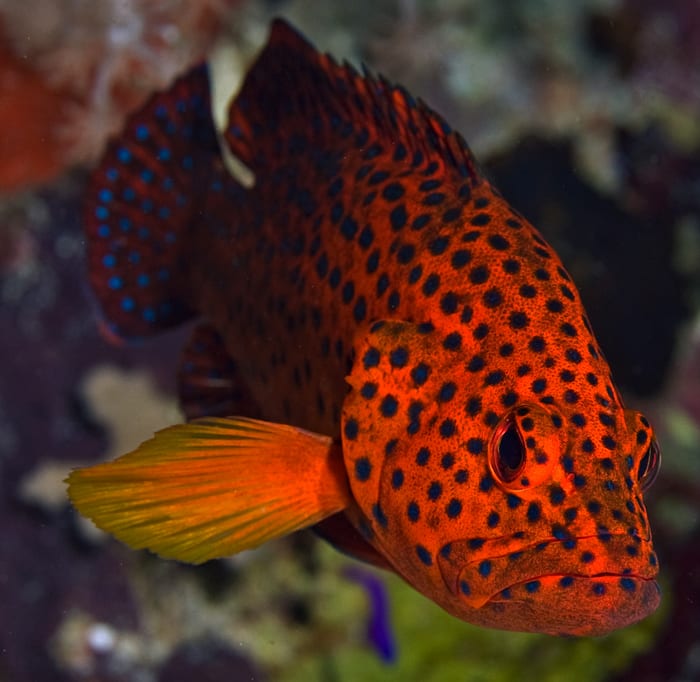Multimedia
Global Distribution of Hydrothermal Vent Fields
A Visionary Fellow
Vice President for Academic Programs and Dean Jim Yoder (left) gave U.S. Senator Scott Brown (Mass.) an overview of WHOI’s science, technology, engineering and mathematics (STEM) program in August 2011. On…
Read MoreTrapped!
Sediment trap samples, such as these recovered from a mooring off Cape Hatteras by the R/V Oceanus in October 2011, offer scientists a glimpse into the complex and often hidden…
Read MoreHomecoming
After three weeks in the northern Atlantic in August 2010, WHOI researchers Jeff Hood and Kathryn Rose were greeted at the Woods Hole dock by colleagues, friends and family. They…
Read MoreWorld Traveler
This 1965 photo shows the stern of R/V Atlantis II, with its name spelled out in the Japanese phonetic alphabet katakana, during a stop by the ship in Tokyo. The…
Read MoreSeagoing Science Fellow
In September 2011, Bob Weller prepared to depart the WHOI dock on R/V Oceanus, on a cruise to deploy a crucial test buoy as part of the Ocean Observatories Initiative.…
Read MoreOne Fine Fellow
Senior Scientist Lloyd Keigwin, whose research focuses on climate and oceanographic change based on studies of deep-sea sediments, is among 14 new fellows of the American Association for the Advancement…
Read MoreWhale Heads and Tales
Scientists need to get inside the heads of whales to learn how they sense sound. Even before they study a whale’s ears, scientists examine its anatomy to get a sense…
Read MoreTraveling Light
WHOI research technician Steve Pike is shown packing water samples on board the R/V Ka’imikai-O-Kanaloa in June 2011 off the northeast coast of Japan. Pike was part of an international…
Read MoreSetting the Right Course
Captain Arthur Dickson Colburn examined a gyrocompass repeater mounted on the deck of the original research vessel Atlantis in the 1950s. The repeater was connected to the main compass inside the…
Read MoreA Helping Hand
Radio journalist Ed Ronco (seated) tries his hand at controlling the Nereus hybrid remotely operated vehicle’s manipulator arm while Andy Bowen (standing, right), director of the National Deep Submergence Facility,…
Read MoreLine Across the Denmark Strait
A team from R/V Knorr prepares to deploy a mooring in the Denmark Strait in August 2011. The instruments on the mooring will help measure water flowing through the strait…
Read MoreSands of Deception
Chinstrap penguins from the world’s largest colony of the birds stand on the black sand of Deception Island, a volcanic island off West Antarctica. WHOI scientist Scott Doney traveled there…
Read MoreMeasuring the Invisible
Research Associate Crystal Breier inserts a prepared sample into a lead-lined gamma well detector. The specialized instrument amplifies and measures energy released by the decay of radioactive isotopes, in this…
Read MoreTracking Harmful Algae
WHOI researcher Bruce Keafer shows a group of science writers in the 2011 Ocean Science Journalism Fellowship program the Environmental Sample Processor (ESP). Scientists are using the instrument to detect…
Read MoreWhales Get the Bends
Scuba divers can get sick ascending too quickly from a deep dive. But can whales? To find out, biologist Michael Moore and colleagues at WHOI looked closely at a lesion in the…
Read MoreMore than Skin Deep
WHOI’s Aran Mooney (left) and Julie Arruda (middle) and Iliana Ruiz-Cooley (right) from NOAA’s Protected Resource Division in San Diego prepare a Humboldt squid (Dosidicus gigas) for a a CT scan at…
Read MorePatience Rewarded
On November 7, 2011, WHOI biologist Peter Wiebe was on board the National Science Foundation research vessel Laurence M. Gould as the ship approached the dock at the Palmer Station…
Read MoreWhat Makes You Sick?
The Sea’s Bounty
A collection of copepods fills a specimen dish to be identified and counted. Scientists on board the research vessel Ka’imikai-o-Kanaloa collected the sample off the northeast coast of Japan in…
Read MoreLaunching the Video Plankton Recorder
The Video Plankton Recorder is an underwater video microscope system that captures images of plankton and particulate matter ranging from 50 microns to a few centimeters in size.
Read MoreOut of Antarctica
Livingston Island in the South Shetlands rises sharply in front of the L.M. Gould’s bow in December 2011 after the ship departs Palmer Station, the U.S. research station on the…
Read MoreSurvival Suits You
The science crew on board any UNOLS (University-National Oceanographic Laboratory System) research vessel spends part of the first day of every cruise in safety briefings and drills. One activity involves…
Read MoreGrumpy Grouper
Despite its expression of perpetual disgust, this jewel grouper (Cephalopholis miniata), also known as coral cod or vermillion seabass, enjoys balmy waters and rich feeding grounds in the clear water…
Read More
